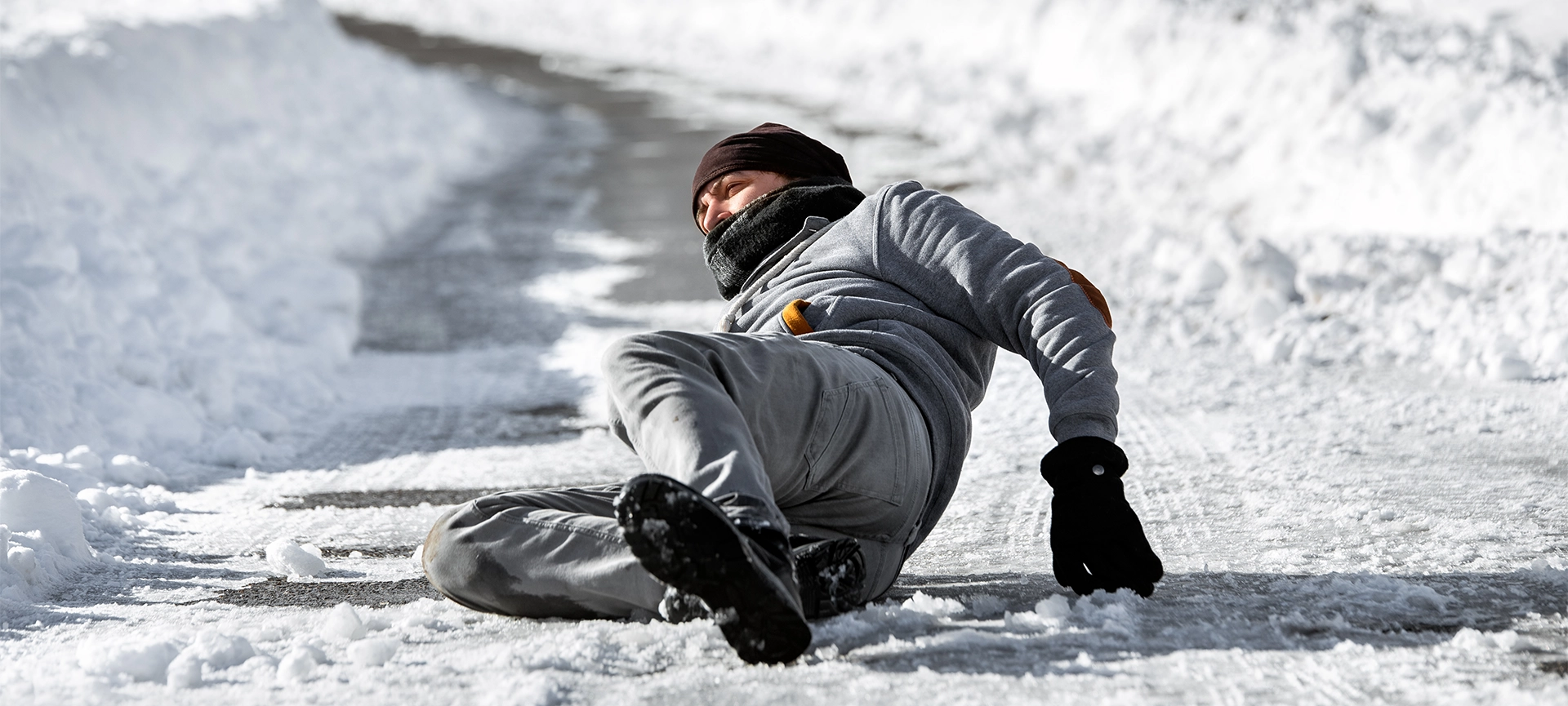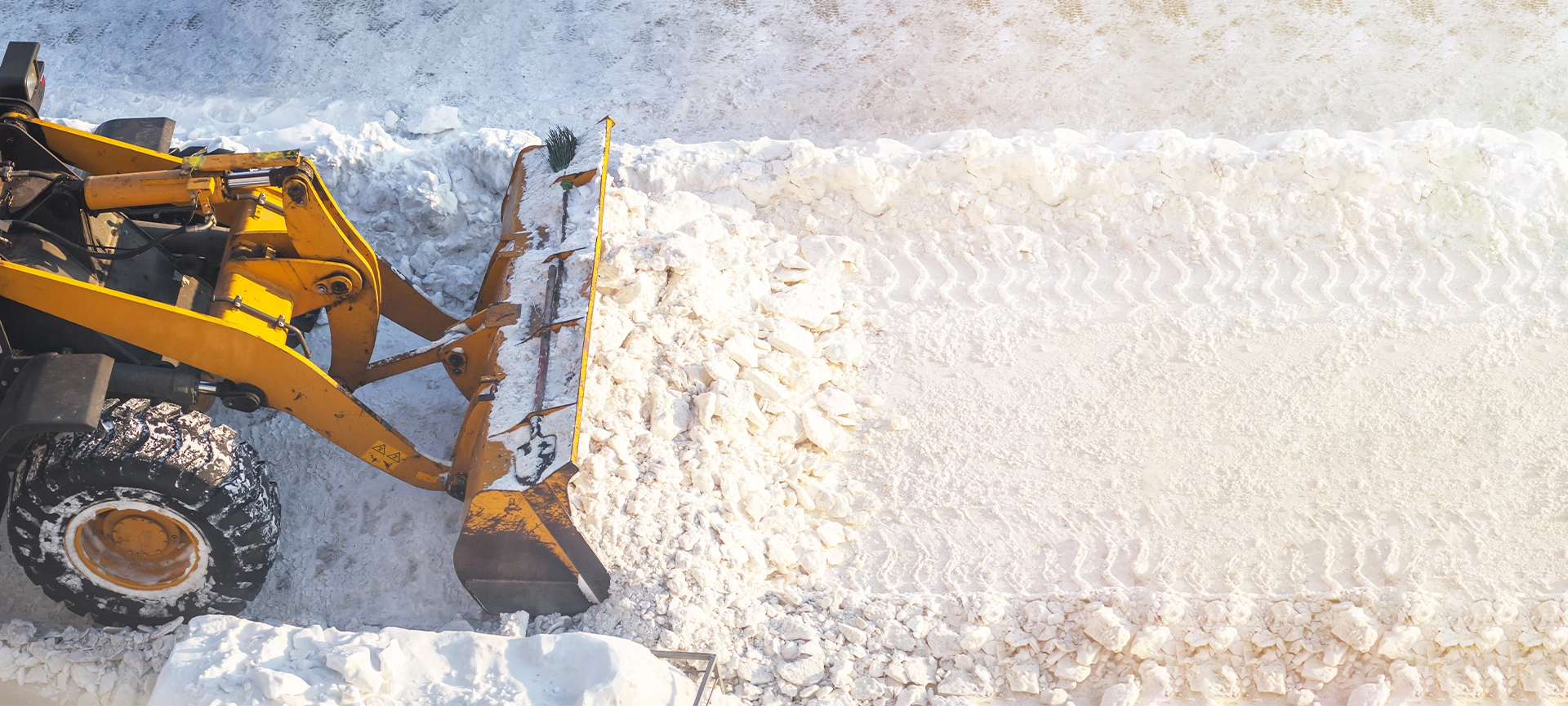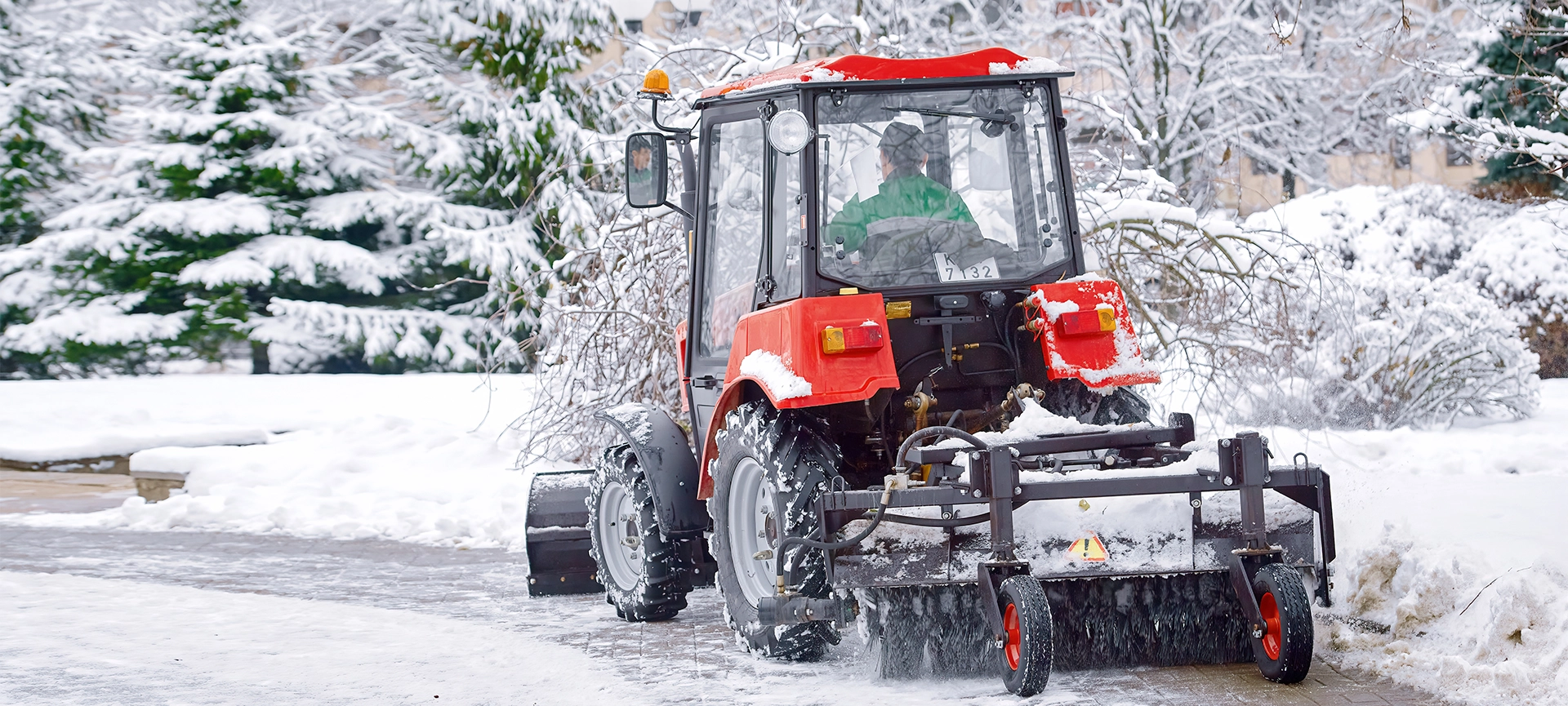
Winter in Canada can turn even the most well-kept private road into a hazard. Heavy snowfall, ice build-up, and drifting snowbanks make safe access nearly impossible without a plan.
For communities, associations, or property owners managing private roads, hiring a professional snow removal service is essential. But what exactly do these services include?
Let’s break down the core components so you know what to expect when contracting a provider.
- Clearing the Roadway
The primary service is plowing, which ensures the driving surface is cleared after each snowfall. Professional contractors use commercial-grade equipment such as pickup plows, skid steers, or larger loaders for wide stretches. Unlike a simple pass with a residential plow, professionals push snow to designated stacking areas to prevent blockages and reduce re-freezing issues.
Many contracts define “trigger depths”—the amount of snow that needs to fall before a plow is dispatched. Common thresholds are 2.5 to 5 cm. You can usually request a lower threshold if your residents prefer cleaner surfaces. Some providers even offer zero-tolerance contracts, where they respond at the first sign of accumulation.
- Snow Hauling and Stacking
In areas with limited space, stacking snow along the side of the road isn’t always practical. Piles can block visibility, encroach on driveways, or damage landscaping. That’s where snow hauling comes in.
Contractors load snow into dump trucks and transport it off-site to designated disposal areas. While this service comes at an additional cost, it is often necessary for narrower private roads or gated communities.
For properties with more space, contractors may build snowbanks strategically. Stacking areas are chosen to minimize meltwater runoff across the road and avoid obstructing fire hydrants, signage, or entrances.
Related Article: Is De-Icing Enough? When You Need Full-Service Ice Management
- De-Icing and Sanding
Clearing snow alone doesn’t prevent slippery conditions. Ice forms when packed snow melts and refreezes, particularly during temperature swings common in Ontario and other provinces. Professional snow removal services, like Green Side Up, include de-icing treatments using salt, brine solutions, or treated abrasives.
Sanding may be used on steep or gravel roads to improve traction. Some providers apply environmentally friendly products designed to reduce chloride runoff while still keeping surfaces safe.
A well-written contract specifies which materials are used, how often they are applied, and whether costs are included or billed separately.
- Monitoring and Weather Response
A critical but often overlooked part of private road snow removal is monitoring. Professional contractors track weather forecasts and road conditions to anticipate when service is needed. This proactive approach ensures roads are cleared quickly after snow events, rather than waiting for residents to complain.
Many companies set estimated time of arrival targets for crews depending on the severity of the storm. For example, light snowfalls may be cleared within six hours, while major storms trigger continuous clearing until accumulation stops. Regular monitoring also allows providers to return for follow-up salting after plowing, reducing overnight icing.
- Walkway and Entrance Clearing
While the road itself is the main focus, snow removal contracts often extend to pedestrian areas. This may include walkways leading to common facilities, mailboxes, or shared parking areas. Keeping these spaces clear reduces slip-and-fall risks and ensures compliance with safety regulations.
For condominiums or homeowner associations managing private roads, bundled contracts that include both road and walkway clearing are more efficient. Crews can complete all tasks in one visit, ensuring a consistent level of safety across the property.
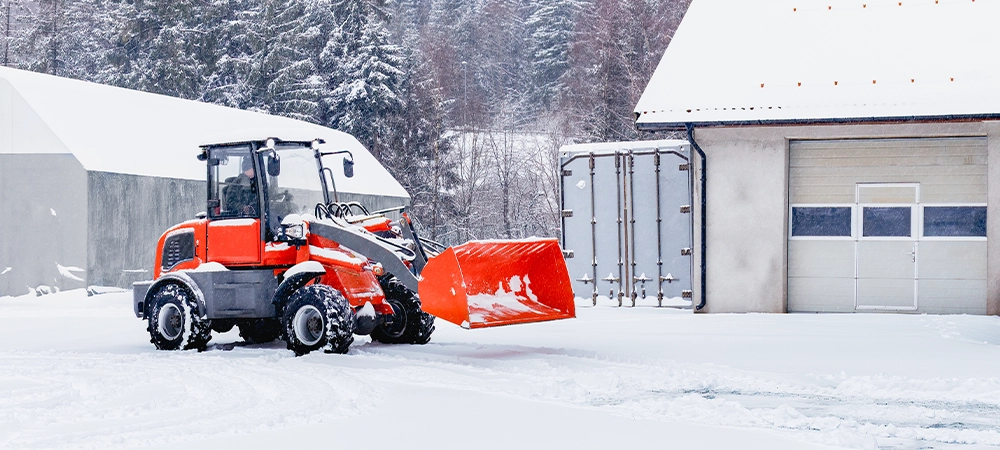
- Equipment and Backup Resources
Reliability depends on more than just showing up. The best providers outline the age of their equipment, availability of backup machines, and number of sidewalk units to prevent downtime. If a loader breaks down mid-storm, they should have contingency plans so your road isn’t left impassable.
Modern equipment with properly maintained blades and hydraulics also produces a cleaner finish, reducing the need for repeated passes.
Some contractors use GPS tracking to verify service times, giving boards or property managers confidence that commitments are being met.
- Insurance and Compliance
Because snow removal involves high liability, any reputable contractor carries commercial general liability insurance—often at least five million dollars in coverage. In Ontario, contractors must also provide a valid Workplace Safety and Insurance Board (WSIB) clearance certificate.
A thorough contract should require the provider to submit proof of insurance and clearance before work begins. This protects the property owner or road association from potential lawsuits if accidents occur during or after clearing.
- Record Keeping and Reporting
Documentation is another feature of professional and commercial snow removal. Contractors typically provide service logs that record date, time, and type of work performed. These reports are essential if an accident occurs and liability claims are filed.
Many communities require providers to archive records for at least three years. Digital systems make this easier, with automatic logs generated by GPS-enabled equipment. For boards or managers, having transparent reporting helps track performance and evaluate renewal decisions.
- Communication Protocols
Effective snow removal depends on clear communication. Contracts should spell out how residents or managers can reach the contractor if problems arise. Some companies offer a dedicated hotline or email for service requests. Others provide a single point of contact to avoid confusion.
Advance notices are also common. For example, management may notify residents of overnight parking bans before plowing, ensuring crews can clear curb-to-curb without obstructions. When snow events are particularly severe, updates from the contractor keep everyone informed about timing and progress.
- Seasonal Cleanups and Damage Repair
Winter operations can leave behind debris, gravel, and minor property damage. Many private road snow removal contracts include a spring cleanup service. Crews sweep up residual sand, salt, and litter, restoring the road to pre-winter condition.
If plows inadvertently scrape sod or damage curbs, reputable contractors repair these areas once the ground thaws. Including this in your agreement ensures accountability and prevents long disputes over responsibility.
Related Article: Top 7 Mistakes Businesses Make with Snow and Ice Management
Cost Structures
Private road snow removal services are billed in different ways. Common options include:
- Seasonal Flat Rate – One fixed price covers the entire winter, regardless of the number of snowfalls.
- Per-Visit Pricing – Charges apply each time plowing or salting is performed.
- Hybrid Models – A base seasonal fee covers light events, with additional charges for storms exceeding a certain threshold.
Each model has benefits depending on your budget and tolerance for risk. Flat rates provide predictability, while per-visit contracts may be more cost-effective during mild winters.
Related Article: How to Audit Your Property for Winter Safety Before the First Snowfall
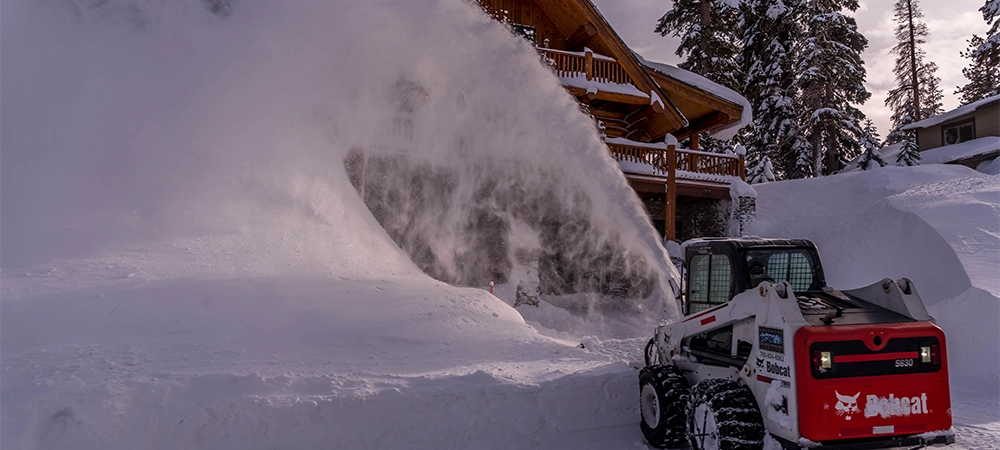
Why Professional Service Matters
Attempting to manage snow removal with resident volunteers or small equipment often backfires. Without proper plows, salting techniques, and insurance coverage, private roads can quickly become unsafe. Professional contractors bring consistency, expertise, and accountability.
Beyond safety, reliable snow removal preserves access for delivery trucks, emergency responders, and service vehicles. For private roads serving multiple households, a well-drafted contract with a reputable provider isn’t just convenient; it’s essential for liability management and peace of mind.
Key Points to Review Before Signing a Contract
- Confirm insurance coverage and WSIB clearance.
- Establish clear trigger depths and response times.
- Define materials used for de-icing and sanding.
- Require service logs and archived reports for at least three years.
- Review equipment backup plans.
- Include provisions for spring cleanup and damage repair.
Moving Forward with Confidence
A private road snow removal service involves much more than simply plowing snow. From de-icing and hauling to monitoring, reporting, and compliance, each component contributes to safety and accessibility throughout winter.
When reviewing contracts, ask detailed questions and ensure terms are clearly defined. Doing so protects your community and ensures reliable service no matter how harsh the season becomes.
For property managers, homeowner associations, and private road owners in the Greater Toronto Area and York Region, Green Side Up Contracting delivers dependable winter services backed by insurance, compliance, and 11-time HomeStars recognition.
Call us today to request a consultation and secure safe, accessible roads this winter.


